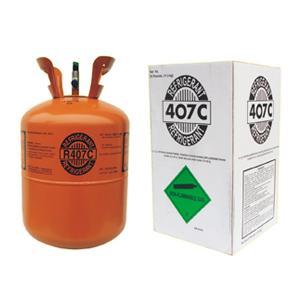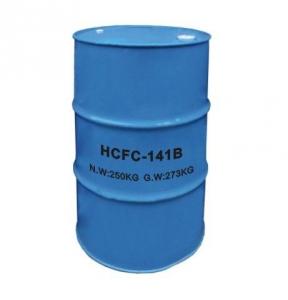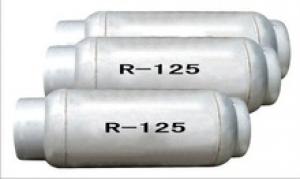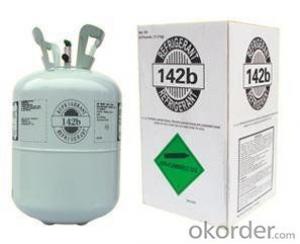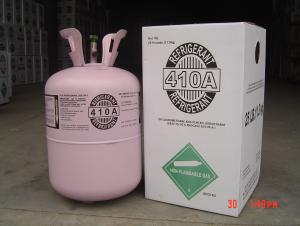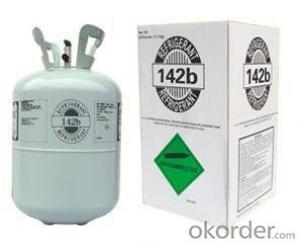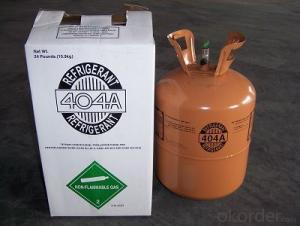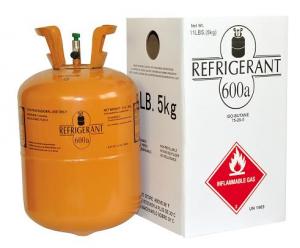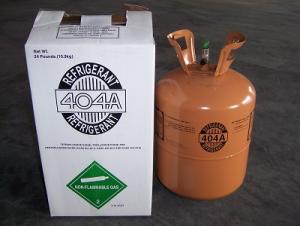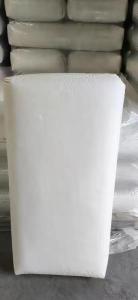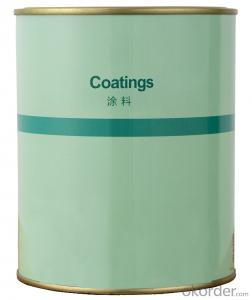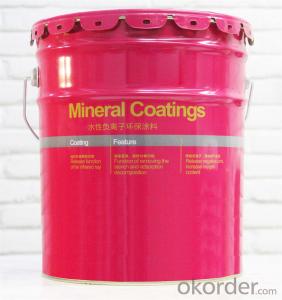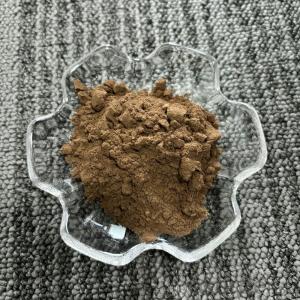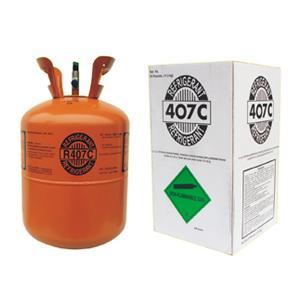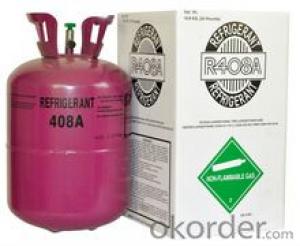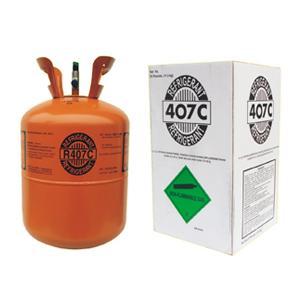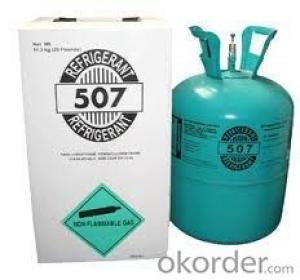Blend Refrigerant R410a
- Loading Port:
- Shanghai
- Payment Terms:
- TT OR LC
- Min Order Qty:
- -
- Supply Capability:
- 1000MT m.t./month
OKorder Service Pledge
Quality Product, Order Online Tracking, Timely Delivery
OKorder Financial Service
Credit Rating, Credit Services, Credit Purchasing
You Might Also Like
Specifications
mixed refrigerant R410a
Applications:Air Conditioning Units,Heat Pumps,Cold Storage
Industrial and Commercial Refrigeration
mixed refrigerant R410A
| Applications: |
| Air Conditioning Units Heat Pumps Cold Storage Industrial and Commercial Refrigeration |
| Physical Properties: |
| Chemical Name: Difluoromethane/Pentafluoroethane R32/R125 Molecular Weight: 72.6 kg/kmol Boiling Point at 1.013 bar: -51.5oC Critical Temperature: 71.8oC Critical Pressure: 48.9 bar Density Liquid at 25oC: 1068 kg/m3 Lubricant: Polyol Ester |
| Pack Sizes: |
| ISO tanks and disposable cylinders |
- Q:Does Organic Chemistry Study the Performance of Hydrocarbons and Their Derivatives?
- Also study the structure and transformation
- Q:Is steel not organic synthetic material?
- Steel is a mixture, the vast majority of elemental iron, also contains other elements, carbon is mixed in the inside, and did not constitute a compound.
- Q:Inorganic chemistry employment direction? Current research direction
- Inorganic chemistry is the science of the composition, nature, structure and reaction of inorganic matter, which is the oldest branch of chemistry. Inorganic substances include all chemical elements and their compounds, except for most of the carbon compounds. (In addition to carbon dioxide, carbon monoxide, carbon disulfide, carbonates and other simple carbon compounds are still inorganic substances, the rest are organic matter.)
- Q:Peracetic acid is not
- A series of compounds produced by the substitution of hydrogen atoms in other molecular or atomic groups as hydrocarbon derivatives, peroxyacetic acid is CH3COOOH, and should be considered
- Q:The functional group of the derivative of the hydrocarbon
- Yes, the number of carbon after a certain, only to determine the nature of the functional group. This is also the reason for the name of the functional group
- Q:Such as the problem, and how, how to squeeze methane into liquid, or how to squeeze into the liquid gas? It is still very difficult ... there is a dangerous thing .... (this is not important) high reward
- Pentane, g, x, n, decane, to eleven to hexadecane are liquid hydrocarbons. Ethanol is not a hydrocarbon, it is aerobic. Polymeric material is a compound of relatively high molecular weight Composition of the material, there are many, such as rubber, plastic, fiber, paint
- Q:What are the characteristics of organic compounds?
- Organic compounds are usually referred to as carbon-containing compounds, or hydrocarbon-containing compounds and their derivatives are collectively referred to as organic matter. Organic compounds are generally insoluble in water and soluble in organic solvents with lower melting points. The vast majority of organic matter heat easily decomposed, easy to burn. The reaction of organic matter is generally slow and often accompanied by side effects, and there are many kinds of organic compounds, which can be divided into two major categories of hydrocarbon and hydrocarbon derivatives. According to the organic groups contained in the functional groups, divided into alkanes, alkenes, alkynes, aromatic hydrocarbons and alcohols, aldehydes, carboxylic acids, esters and so on. According to the organic carbon molecular structure, can also be divided into open chain compounds, carbocyclic compounds and heterocyclic compounds three categories.
- Q:Sugar, fat, and so on a variety of organic matter is full of different units of the heat of the small box. (Save the heat the most efficient, the least loss of heat the most practical and most economical box).
- The fundamental difference between organic matter and inorganic matter is whether it contains carbon elements (except carbon monoxide, carbon dioxide, carbonates, metal carbides and other simple carbon compounds). Is the carbon-based life (that is, we) the division of life material and non-life material academic concept. Regardless of whether or not to store heat. The ability of many inorganic materials to store heat is much higher than that of organic matter. From a broad cosmic perspective. Organic and inorganic division does not make sense, assuming that there is a silicon-based life (this possibility is very high). Then their organic and inorganic division should lie in whether it contains silicon.
- Q:The role of aromatic hydrocarbons
- Aromatic hydrocarbons referred to as "aromatic hydrocarbons", usually refers to the molecule containing benzene ring structure of the hydrocarbons. Is a closed-chain type. With the basic structure of the benzene ring, the history of the early discovery of such compounds have more aromatic flavor, so called these Hydrocarbons are aromatic hydrocarbons, and hydrocarbons that are later found to have no aromatic flavor are also commonly used in this way, such as benzene, naphthalene, etc. The homology of benzene is CnH2n-6 (n≥6).
- Q:What is the hydrocarbon thing
- Hydrocarbon, which is composed of two elements, consists of carbon and hydrogen. It is called a hydrocarbon and a hydrocarbon, which reacts with chlorine, bromine vapor, oxygen and so on. It does not react with strong acid, strong base, strong oxidizer (Such as: potassium permanganate) reaction, such as methane and chlorine in the light conditions of reaction to produce methyl chloride, dichloromethane, chloroform (chloroform) and tetrachloromethane (carbon tetrachloride) and other derivatives in the Hydrocarbon molecules in the carbon atoms connected to each other to form a carbon chain or carbon ring molecular skeleton, a certain number of hydrogen atoms attached to the carbon atoms, so that each carbon atom to maintain the price of the type of hydrocarbon is very much, the structure of known hydrocarbons More than 2,000 hydrocarbons are the parent of an organic compound. Other organic compounds can be seen as derivatives of one or more hydrogen atoms in the hydrocarbon molecule that are replaced by atoms or radicals of other elements. Word, is the use of "carbon" consonant with "hydrogen" vowel synthesis of a word, with "carbon" and "hydrogen" the composition of the internal structure of the word, the hydrocarbon is the parent of all organic compounds can be said that all Organic compounds are nothing but the result of replacing some of the atoms in the hydrocarbons with other atoms.
1. Manufacturer Overview |
|
|---|---|
| Location | |
| Year Established | |
| Annual Output Value | |
| Main Markets | |
| Company Certifications | |
2. Manufacturer Certificates |
|
|---|---|
| a) Certification Name | |
| Range | |
| Reference | |
| Validity Period | |
3. Manufacturer Capability |
|
|---|---|
| a)Trade Capacity | |
| Nearest Port | |
| Export Percentage | |
| No.of Employees in Trade Department | |
| Language Spoken: | |
| b)Factory Information | |
| Factory Size: | |
| No. of Production Lines | |
| Contract Manufacturing | |
| Product Price Range | |
Send your message to us
Blend Refrigerant R410a
- Loading Port:
- Shanghai
- Payment Terms:
- TT OR LC
- Min Order Qty:
- -
- Supply Capability:
- 1000MT m.t./month
OKorder Service Pledge
Quality Product, Order Online Tracking, Timely Delivery
OKorder Financial Service
Credit Rating, Credit Services, Credit Purchasing
Similar products
New products
Hot products
Hot Searches



